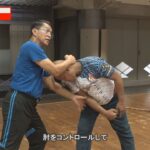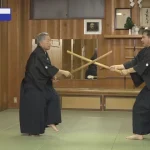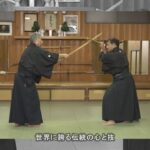What is KUDEN?
Since many Bujutsu (fighting systems) were established in Japan, teachers have used KUDEN to transfer the special deep knowledge to their selected students, such as their successors. The Japanese word KUDEN is translated as “verbally transferred knowledge”. For every RYUHA (style) they had special knowledge for almost all techniques and they did not leave this knowledge in writing to keep this knowledge confidential. The teachers taught this knowledge verbally, only to the selected students whom they thought they could trust. In this way they tried to keep the purity of their RYUHA and transfer it to future generations.
Kataeri Koteseme Ichijyo Fudo 片襟小手責め一条不動
This is a unique technique of our Gyakutedo style which contains interesting and deep knowledge as a typical Jujutsu technique. This KATA can also be performed by using the AIKI method which requires far less power than the original Jujutsu version. That option is explained later on.
A.How it is performed by Jujutsu
1. Hereafter the sequence is shown below.
1) A (attacker) grasps D’s (defender’s) left collar (ERI) using his right hand (JYUN TORI).
2) D grasps A’s right lower arm with both hands, keeping A’s hand tight against D’s left shoulder.
3) D pushes A’s right arm by turning his left shoulder and, using his right shoulder as the pivot point, forces A down.
4) D controls A using UDE ICHIJYO FUDO.
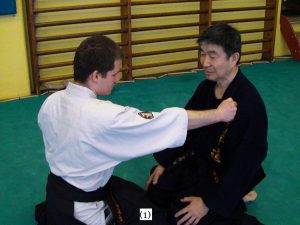
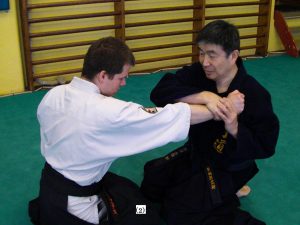

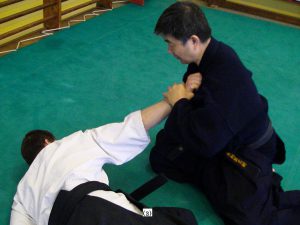
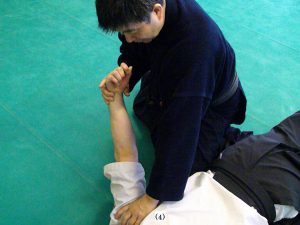
2. Know-how of this technique
If D pushes A’s right arm just with the left shoulder, A pushes back, and consequently, it becomes quite hard for D to push A enough to unballance them. In this case D uses not only the simple pushing with the left shoulder but also uses a moment of force (i.e., D turns his shoulder to create moment of power). Understanding the concept of moment of power there are two ways to make the moment of power larger: 1) increase the pushing power F, or 2) increase length of the moment L.
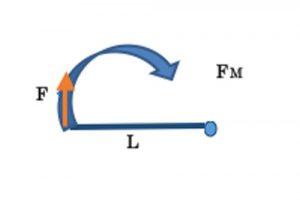
# Moment of Power FM
FM = F X L F:power, L:length of rotation
And there are two options to realize 2) as:
a. Slide A’s right hand from the left collar to left shoulder as far as possible away from the the neck, fig-5,6
b.Make the center of rotation not at D’s head, but at the end of his right shoulder, fig-7,8You can also compare how it will become easier (i.e., need less power), when you compare the cases shown in fig-5,6,7,8. There are remarkable differences.
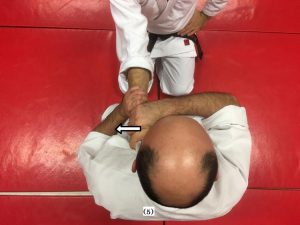
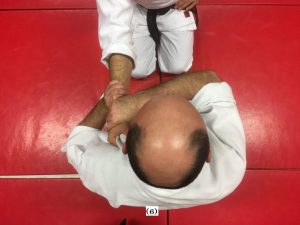
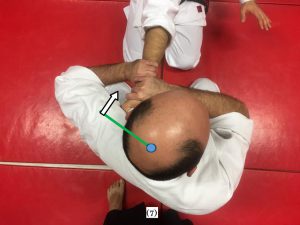
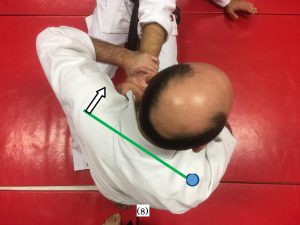
B. How it can be performed by AIKI
If one can apply AIKI to this technique, the beginning Kuzushi (崩し unbalancing) becomes extremely easy and can be done using far less power which will surely surprise you. Hereafter, it is explained as follows:
1) D grasps A’s left collar (ERI) with his right hand (JUN TORI).
2)A grasps D’s right lower arm by both hands and, through his right arm, transfers power directly to D’s right shoulder.
3) D receives A’s power into his shoulder, which is pushed backwards, causing him to lose his balance.
4) A turns his body to the right, pushes D’s right shoulder onto the floor, and performs ICHIJYO FUDO.
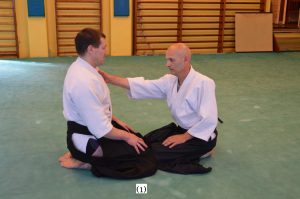
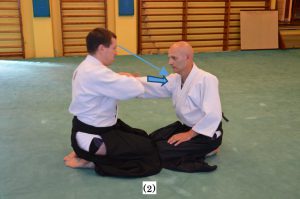
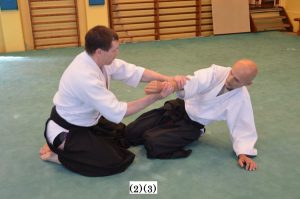
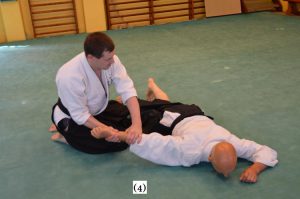
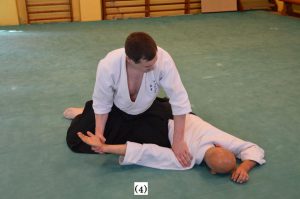
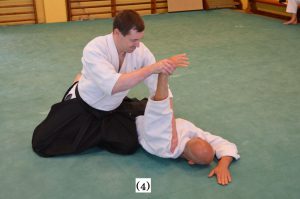
3. How this AIKI technique can be performed
In fig-2, if D pushes A’s right arm by power, A blocks it, and D cannot unballance A. So, D applies power via A’s arm into his right shoulder. D must apply his power just through A’s wrist, which never becomes set in-place, and it works directly into A’s right shoulder. Only a tiny amount of power is enough if D’s intention is correctly set on A’s right shoulder.
For this technique, AIKI, Method-3, or “targeted power transfer”, you can find a more detailed explanation in the book “How to Aiki”.
Reference:
“How to AIKI” written by Makoto KURABE, English version of “Dekiru Aikijutsu 出来る合気術” published by BAB Japan in 2012
Acknowledgements:
English edition : Andrew Bryant sensei, Gyakute-do Indianapolis branch 2nd Dan, 4th Dan Hakko-ryu Jujutsu, representative of Shinwakan Dojo http://www.indianapolismartialartscenter.org/
Participants:
Gyakutedo European H.Q. : Theo Philips Shihan 6th Dan
Gzakutedo European H.Q. : Sander Martens 4th Dan
Gyakutedo Poland Bydgoszcz : Jarosław Paradowski 3rd Dan
Gyakutedo Poland Warsaw : Przemisław Antczak 3rd Dan
Gyakutedo Poland Warsaw : Michał Swiderek 1st Dan
Place :
Sportakademy Den Haag Nederland, Kashiwa Chuo Taiikukan Chiba Japan
Gyakute-do Warsaw branch NAKA Dojo
Makoto KURABE – SHISEIDO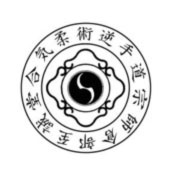
Representative, 2nd Soushi of
AIKI JUJUTSU GYAKUTE-DO
website: www.gyakutedo.org/wp
mail: apply@gyakutedo.org
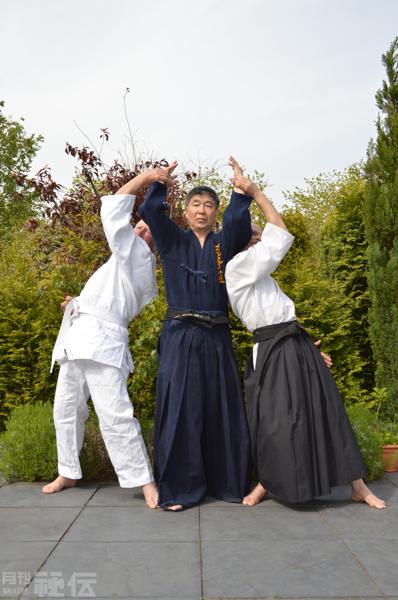 Kurabe Makoto Shiseido
Kurabe Makoto Shiseido
Born in 1950. When he was in his 30s, he began learning Gyakute-do Jujutsu, which was derived from Hakkoryu Jujutsu in the 1970s. Just before reaching the age of 40, he moved from Japan to The Netherlands and continued to master and develop Gyakute-do. In October of 2013, after adding the system of Aiki-Jutsu that he developed himself, he transformed Gyakute-do into Aiki-Jujutsu Gyakute-do, and became 2nd Soushi, grand master, of Gyakute-do. After retirement, he left The Netherlands and began promoting Aiki-Jujutsu Gyakute-do both in Japan and in Poland as his main pursuit. He is also teaching his Gyakute-do to Budo fan in the world via corresponding course.
At the starting of AIKI Web Course
Cooperating with BAB Japan Co., Ltd., hereby I start AIKI Web Course in order to realize my long-standing desire to let as many as martial arts fans all over the world have the correct knowledge of AIKI and learn how to practice AIKI.
This course consists of
Part 1 as introductory articles, I explain a wide range of knowledge about what AIKI is, which contains 6 lessons.
Part 2 as main articles, for beginners/intermediate level, I explain how to practice AIKI to master. It contains 24 lessons.
The each lessons will be uploaded on BudoJapan website one by one every week.
I hope as many people as possible will be interested in AIKI and become able to practice it by following this course.
AIKI Web Course 25 Lessons
-
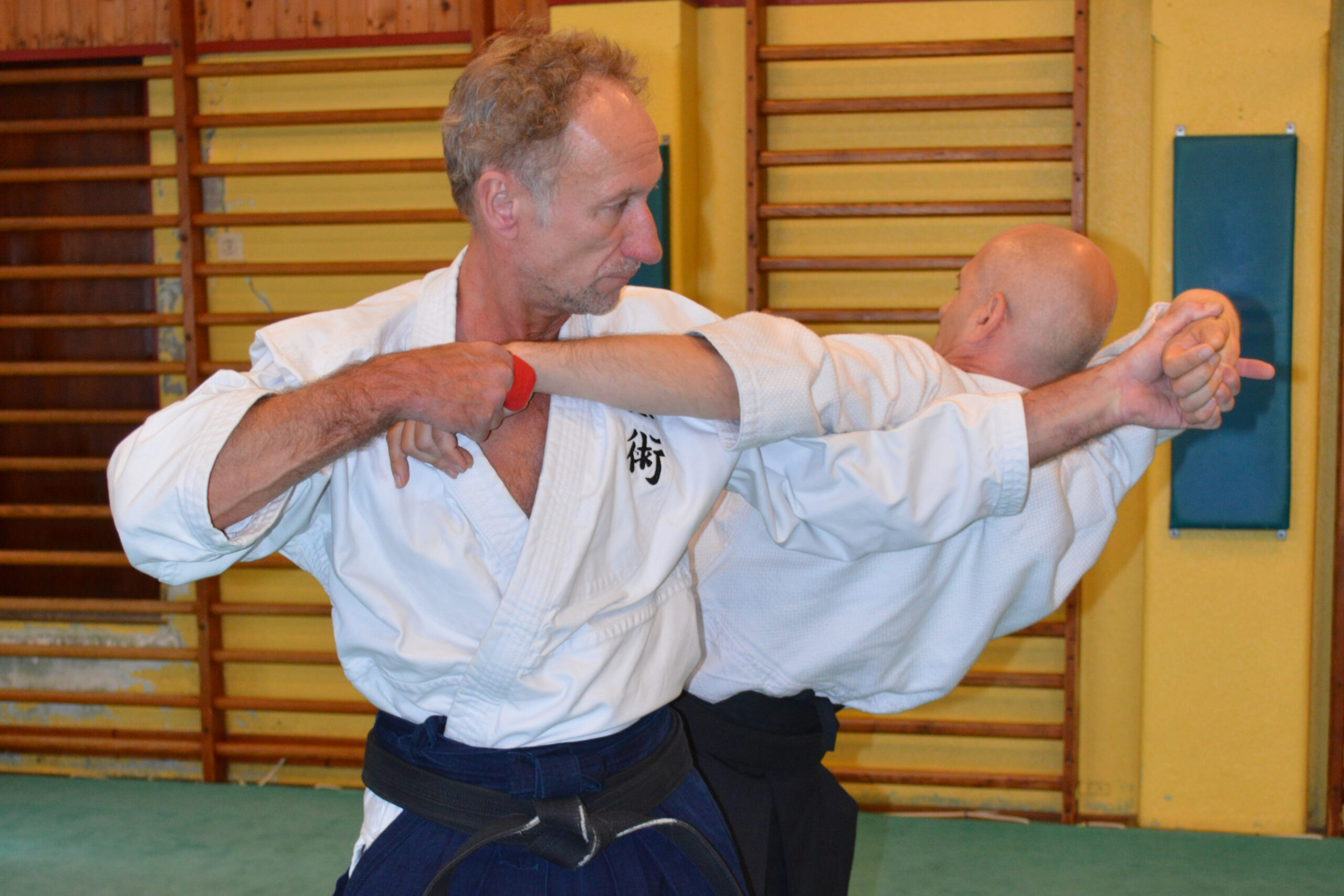
【AIKI JUJUTSU GYAKUTE-DO Series No.5】How you can learn Jujutsu properly
-
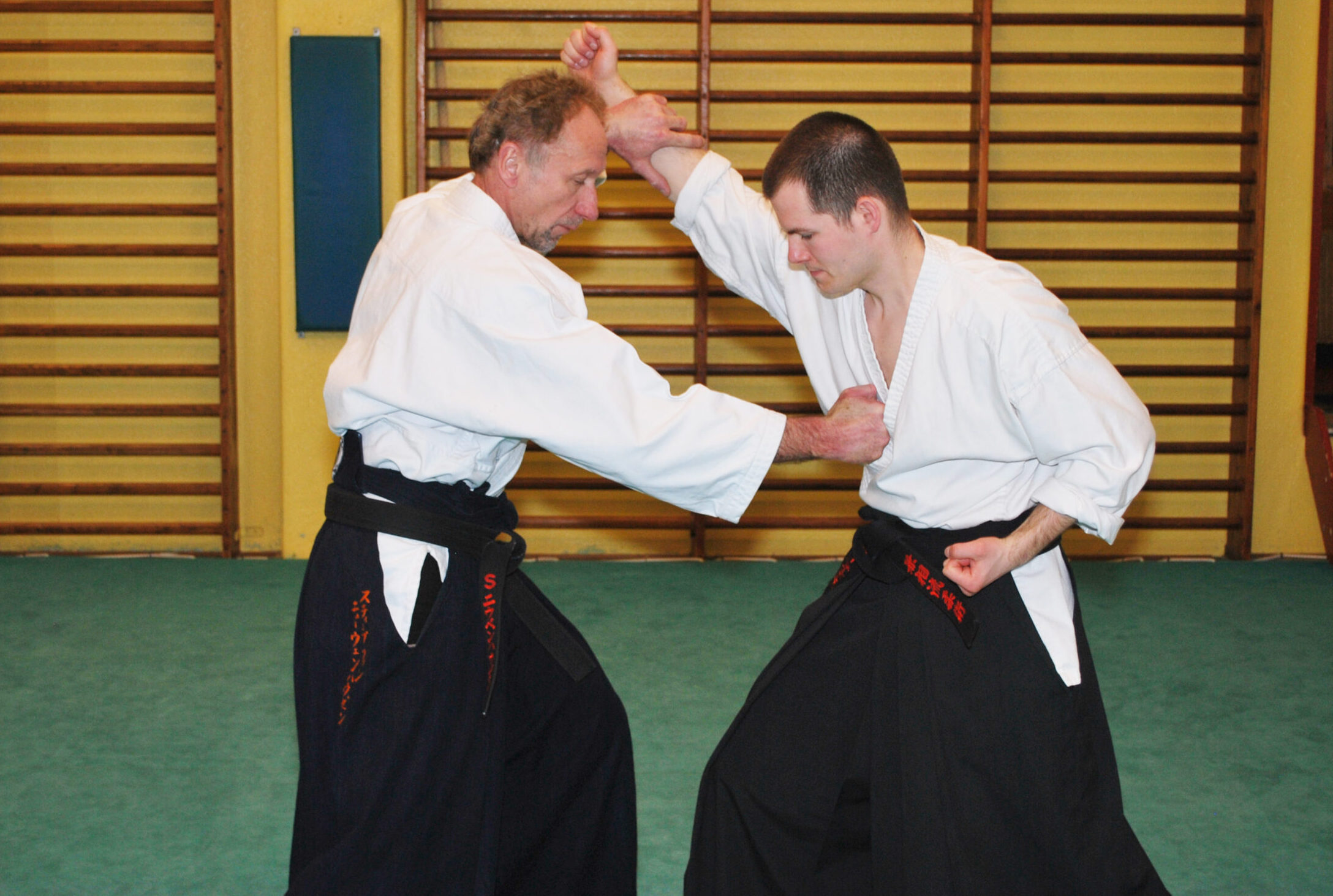
【AIKI JUJUTSU GYAKUTE-DO Series No.4】DAKEN-HO Hit and Kick KATA and AIKI
-
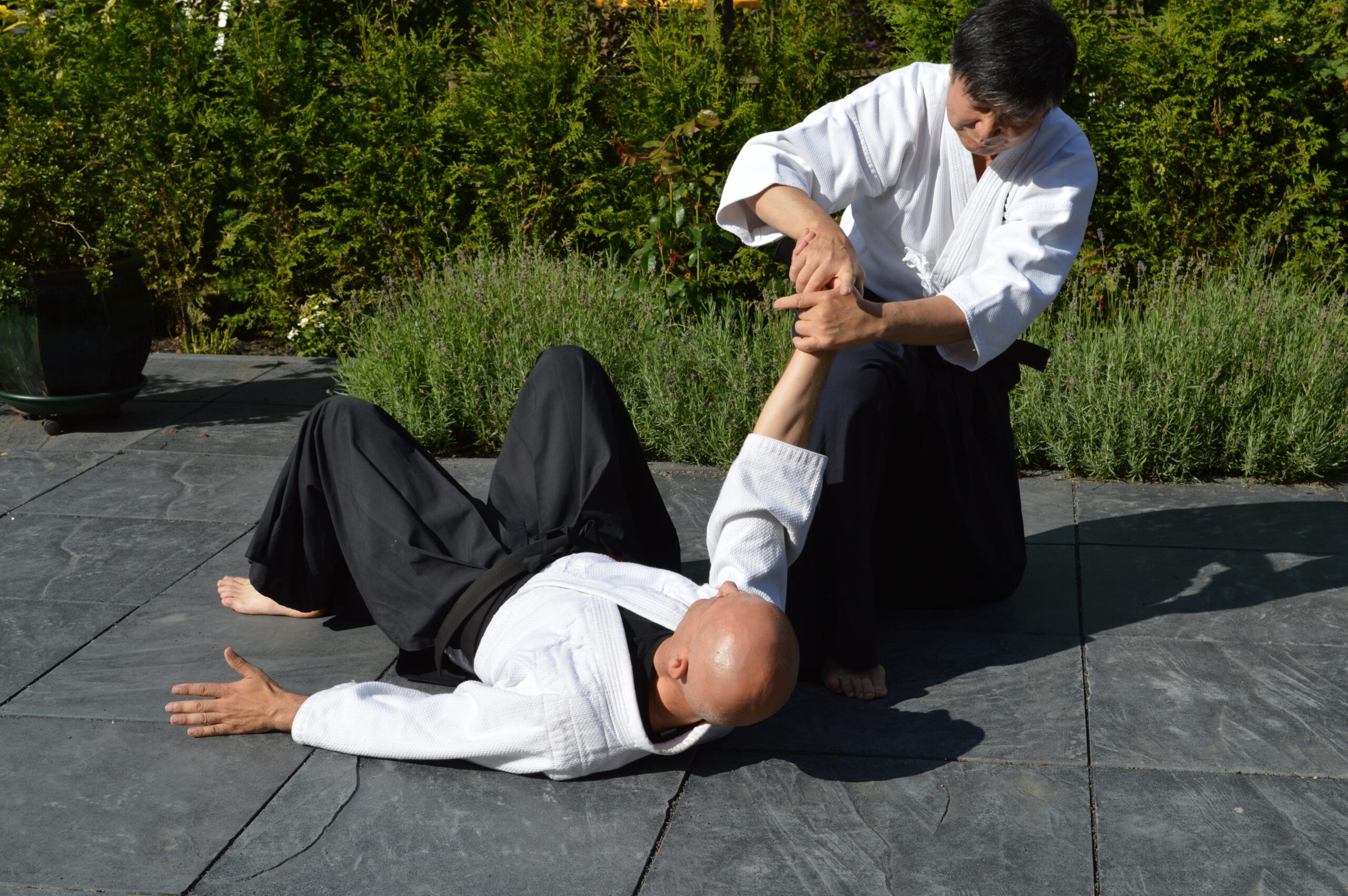
【AIKI JUJUTSU GYAKUTE-DO Series No.3】JUJUTSU WAZA, digest of FUDO
-
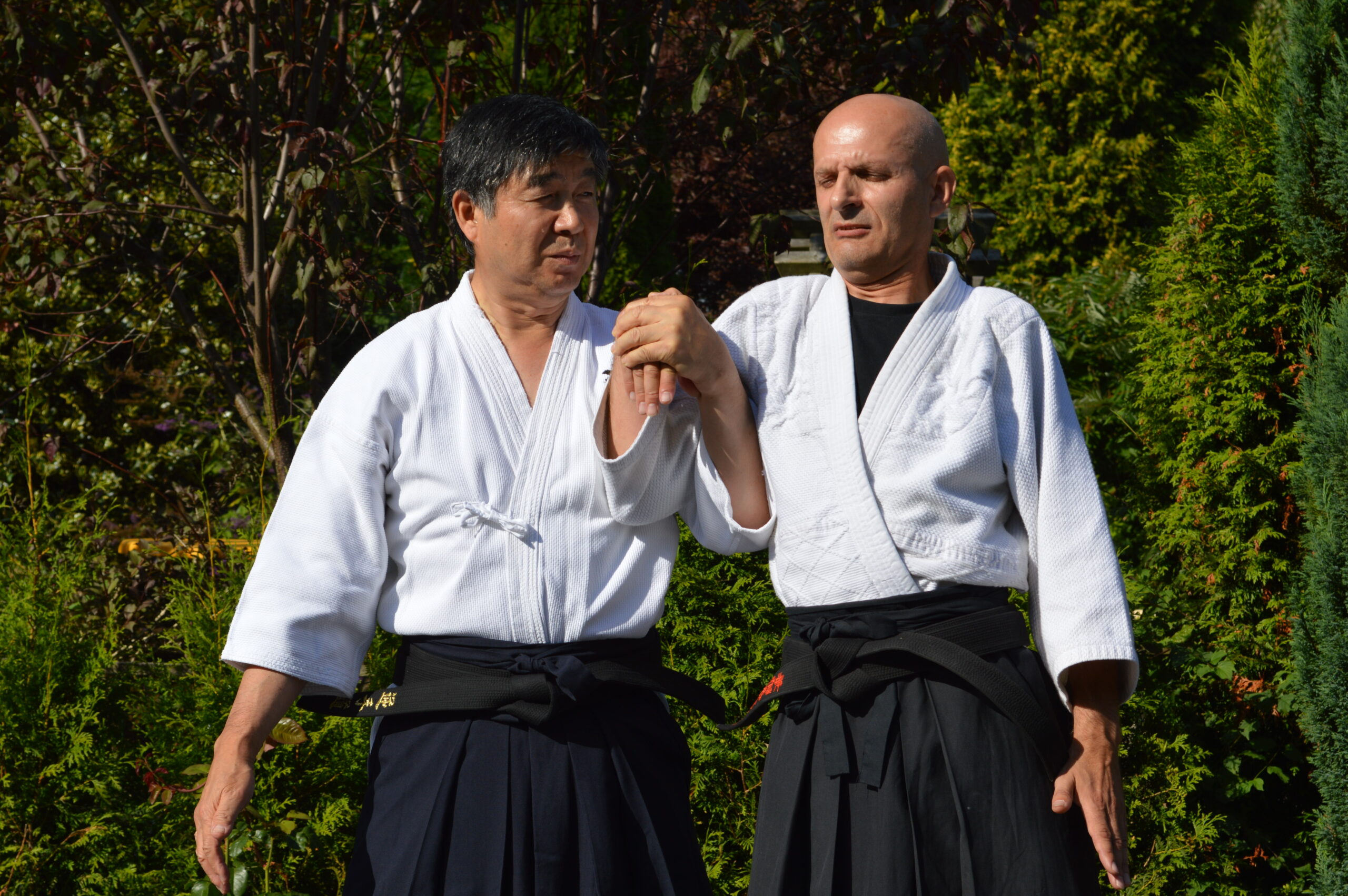
【AIKI JUJUTSU GYAKUTE-DO Series No.2】JUJUTSU WAZA, digest of NUKI, RENKO and NAGE
-
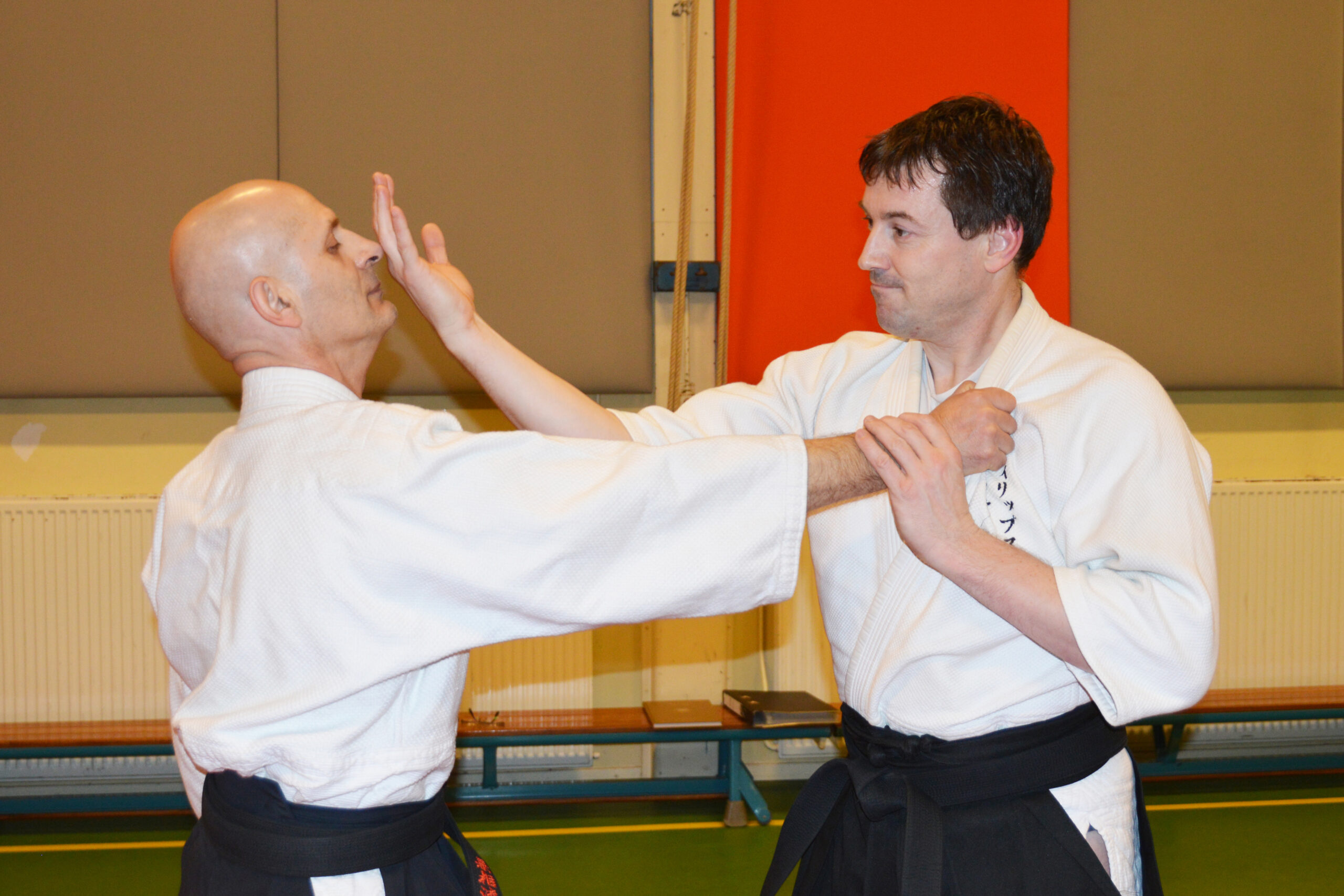
【AIKI JUJUTSU GYAKUTE-DO Series No.1】About GYAKUTE-DO and the digest of its basic techniques
-
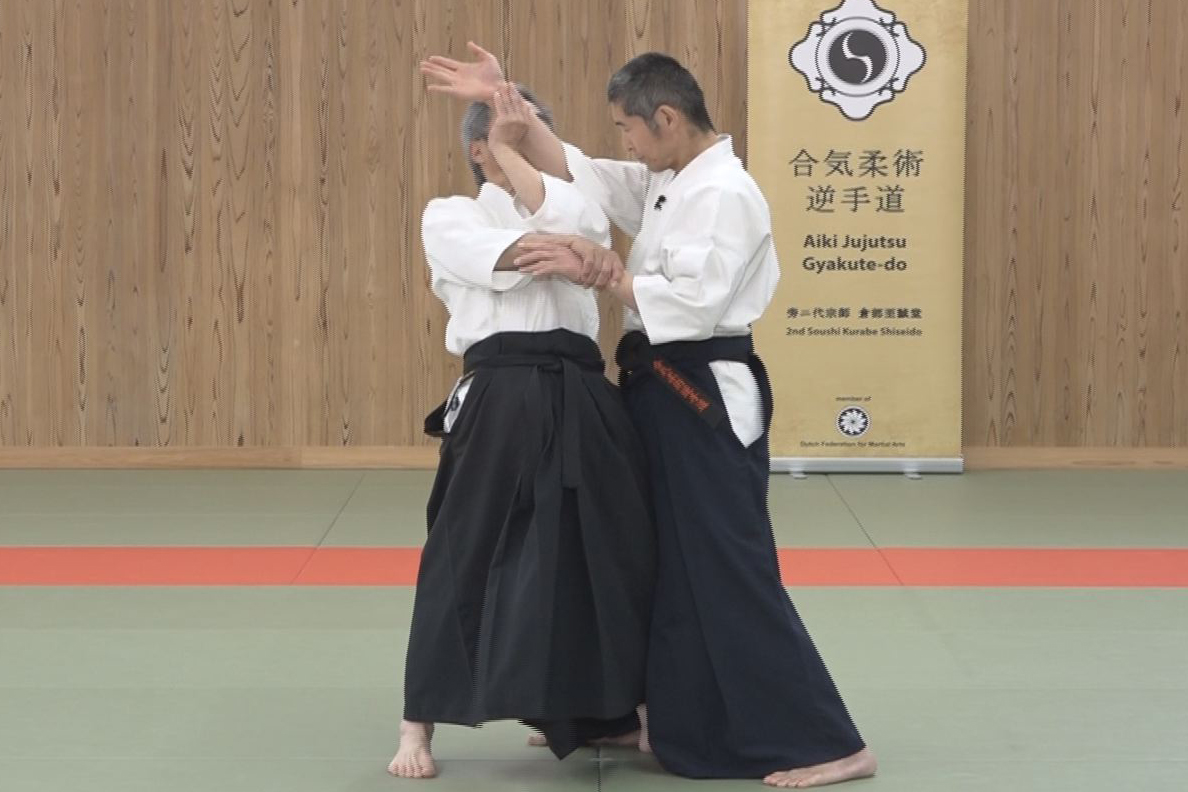
【AIKI Web Course Part 2】Lesson 24 With Comb. of Different Methods #2
-
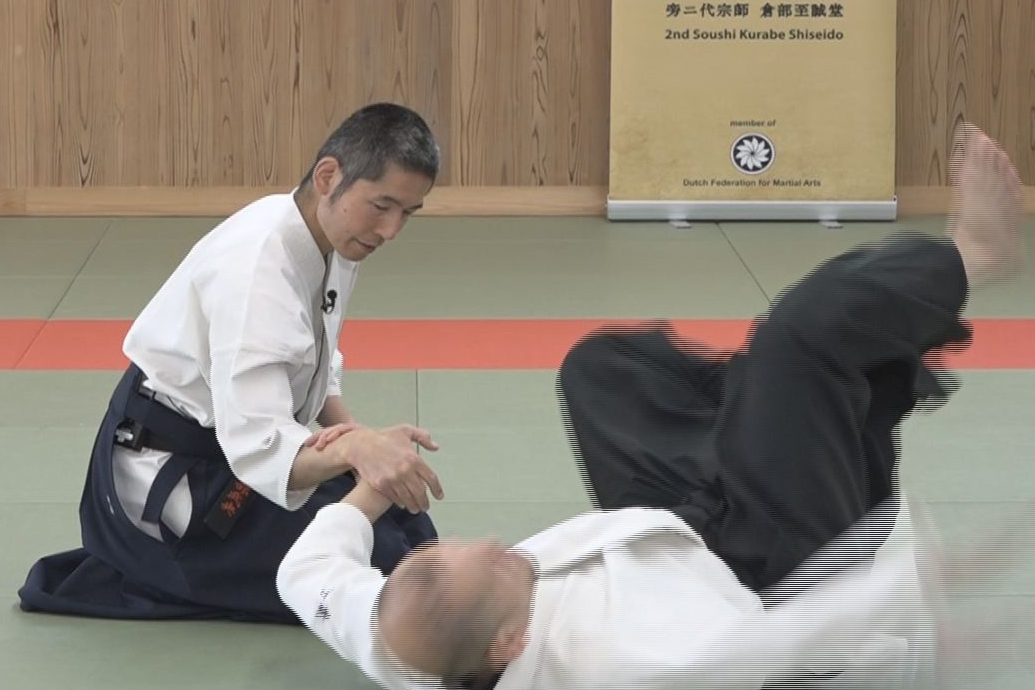
【AIKI Web Course Part 2】Lesson 23 With Comb. of Different Methods #1
-

【AIKI Web Course Part 2】Lesson 22 Advanced Tech. using F. E. method #2
-

【AIKI Web Course Part 2】Lesson 21 Advanced Tech. using F. E. method #1
-
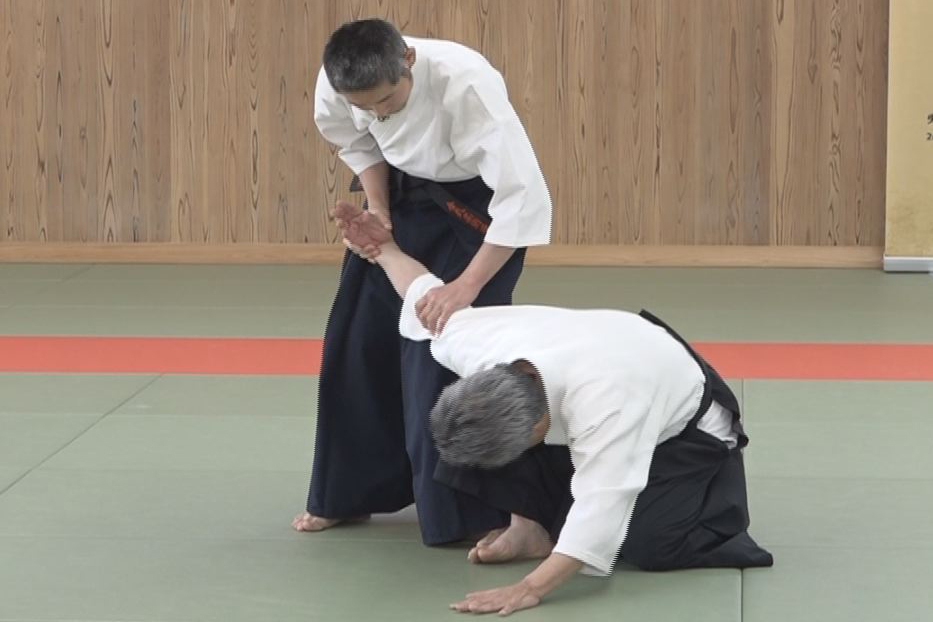
【AIKI Web Course Part 2】Lesson 20 Advanced tech. using T. F. T. #2
-
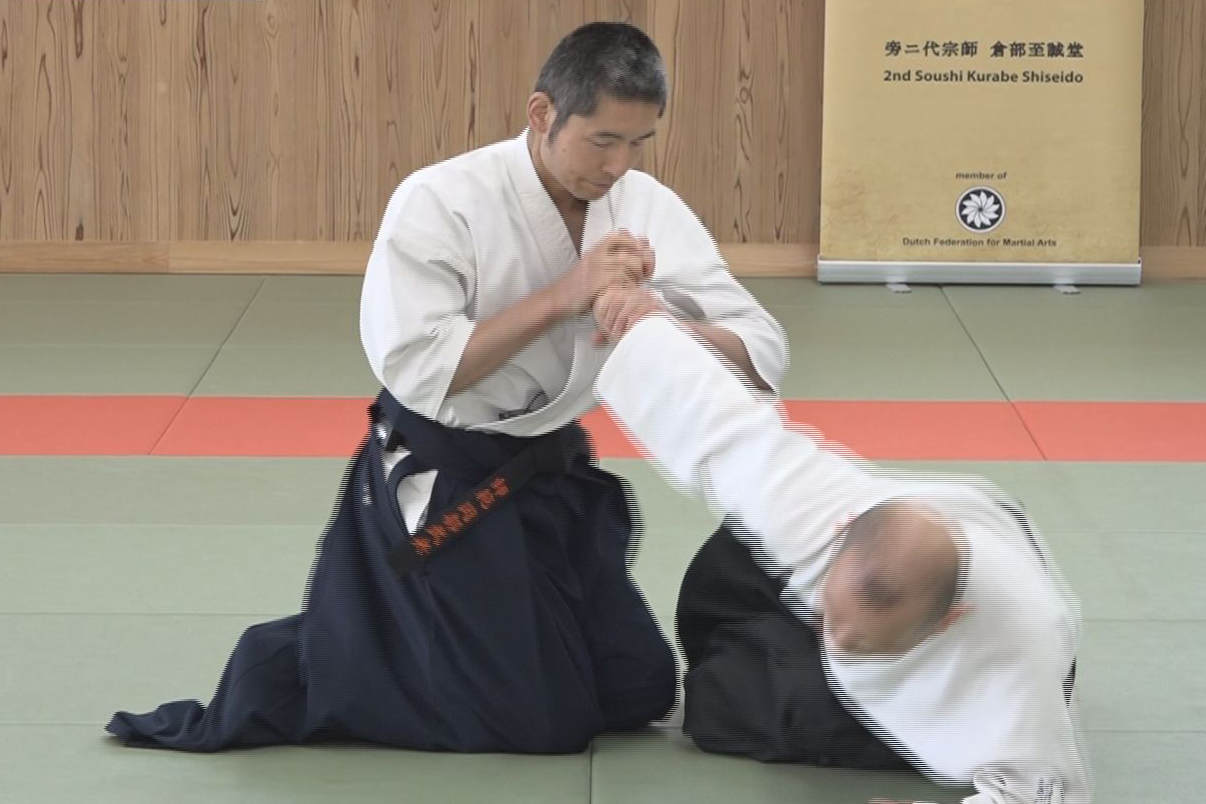
【AIKI Web Course Part 2】Lesson 19 Advanced tech. using T. F. T. #1
-
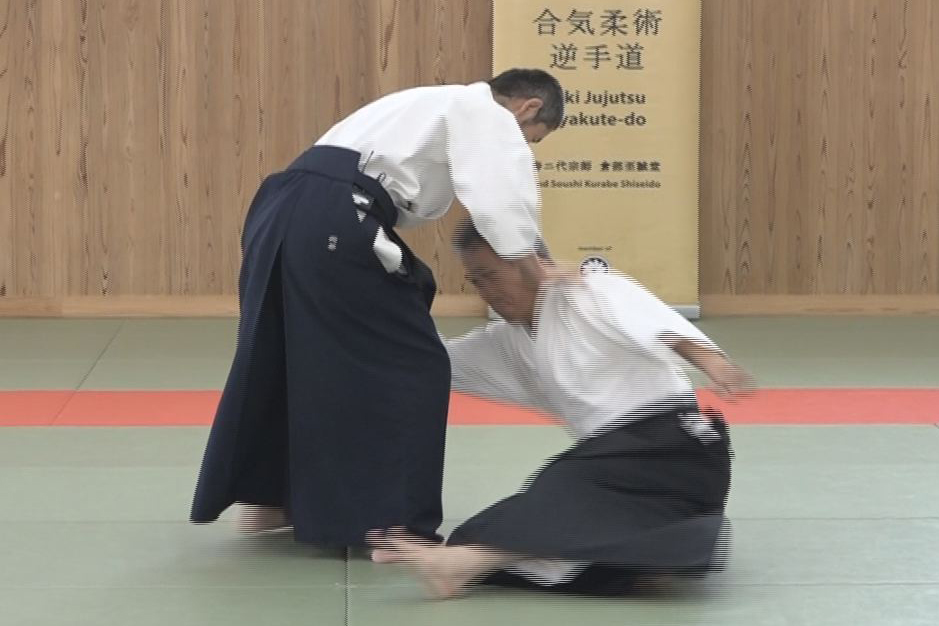
【AIKI Web Course Part 2】Lesson 18 Advanced tech. using AIKI Contact #2
-
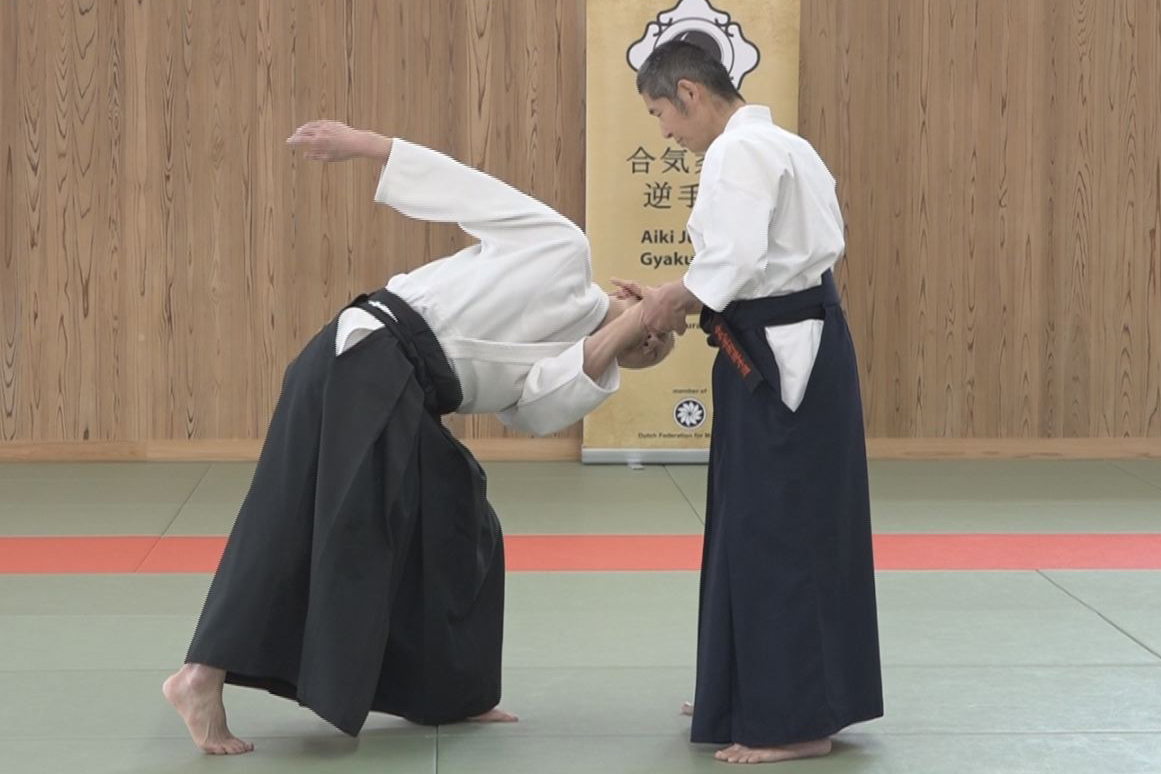
【AIKI Web Course Part 2】Lesson 17 Advanced tech. using AIKI Contact #1
-
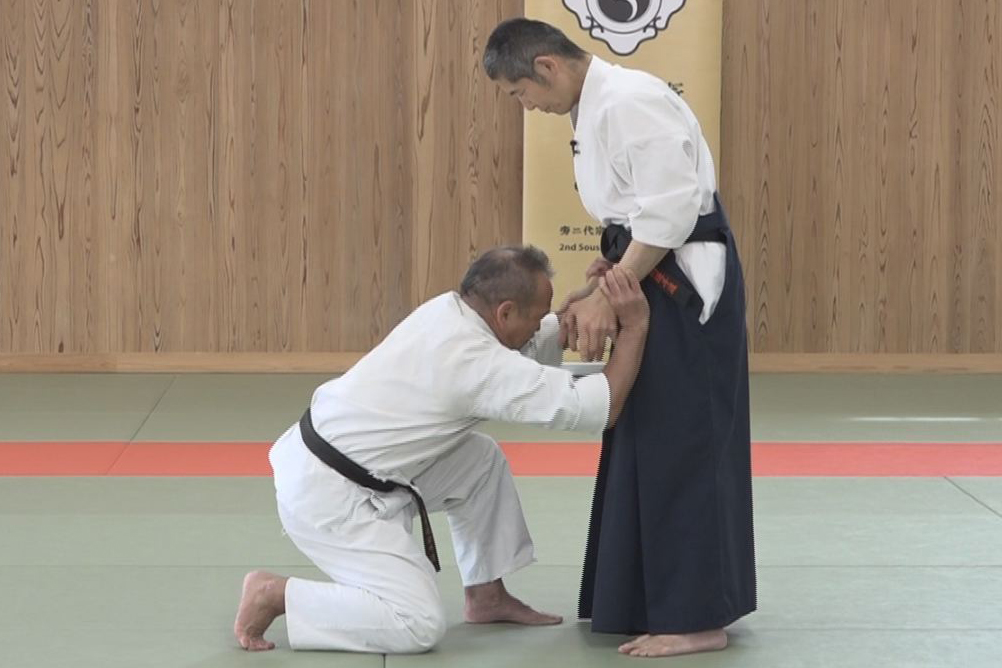
【AIKI Web Course Part 2】Lesson 16 Advanced tech. by Undetectable F.T. #2
-
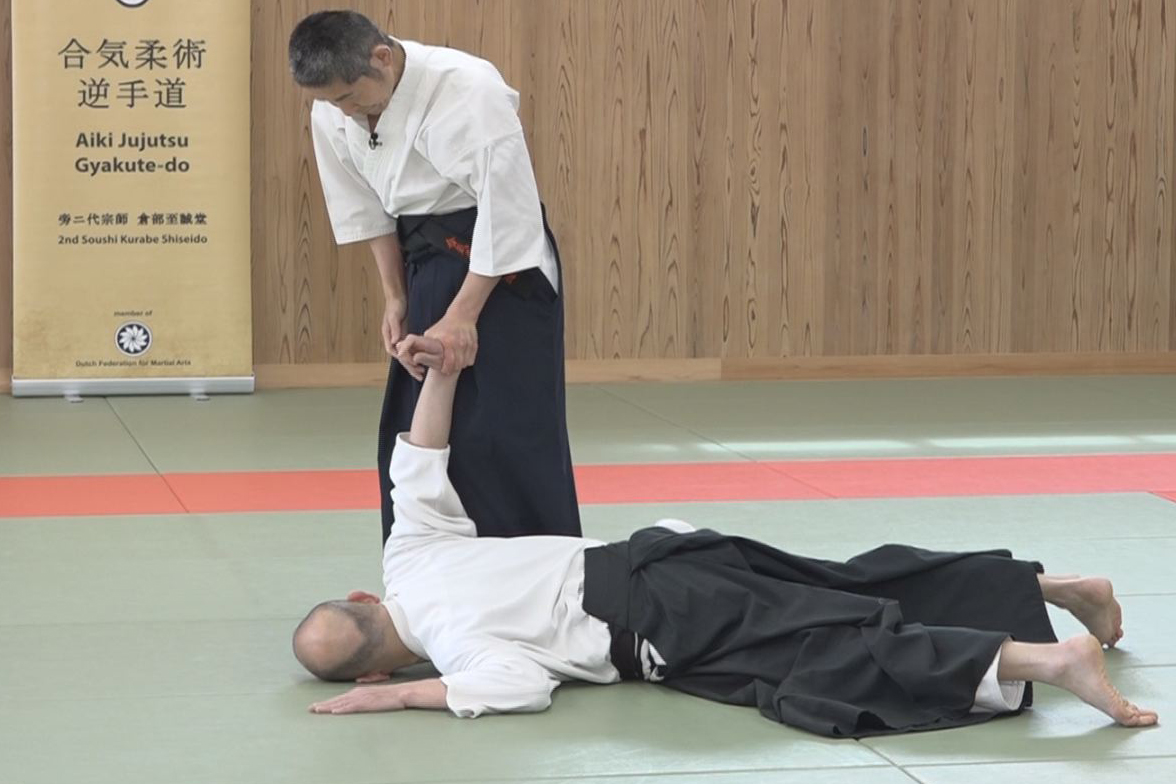
【AIKI Web Course Part 2】Lesson 15 – Advanced tech. by Undetectable F. T. #1
-
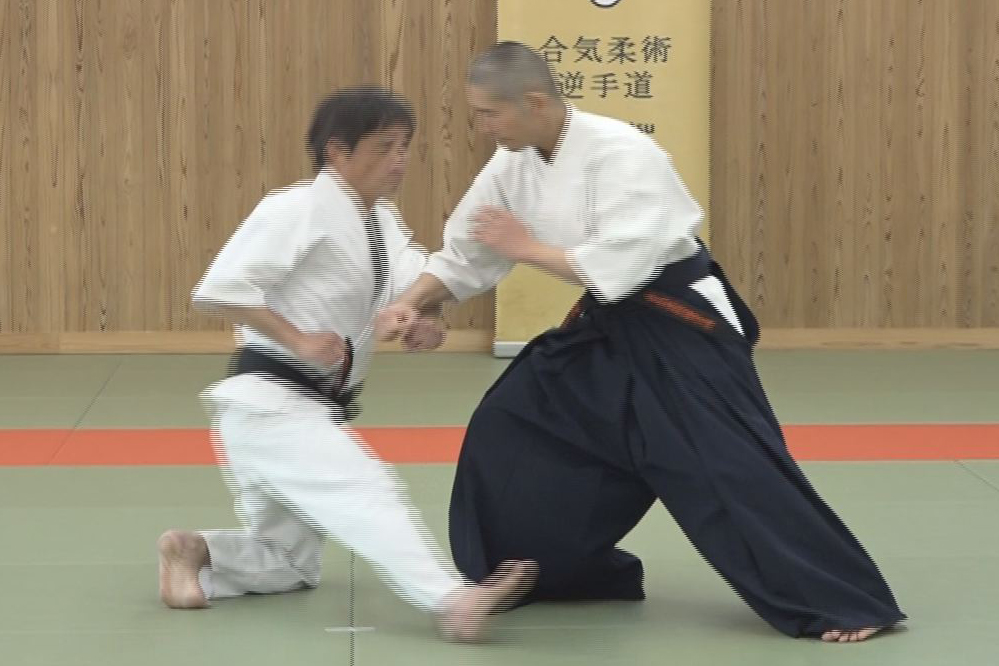
【AIKI Web Course Part 2】Lesson 14 – Advanced tech. by the Waving method #2
-
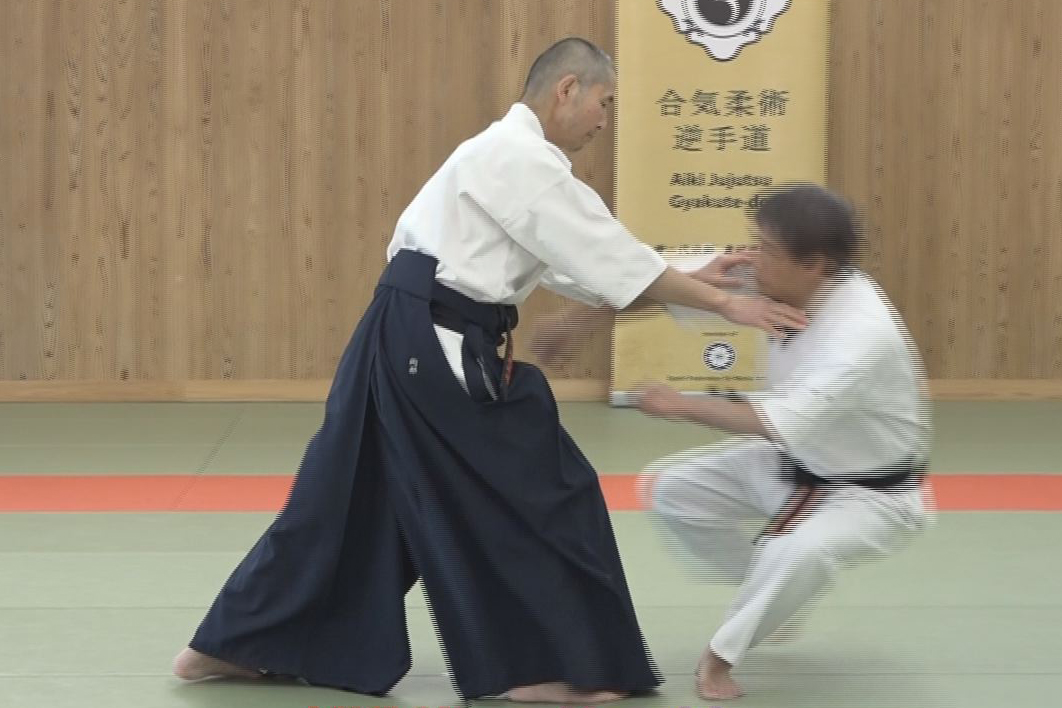
【AIKI Web Course Part 2】Lesson 13 – Advanced tech. by the Waving method #1
-
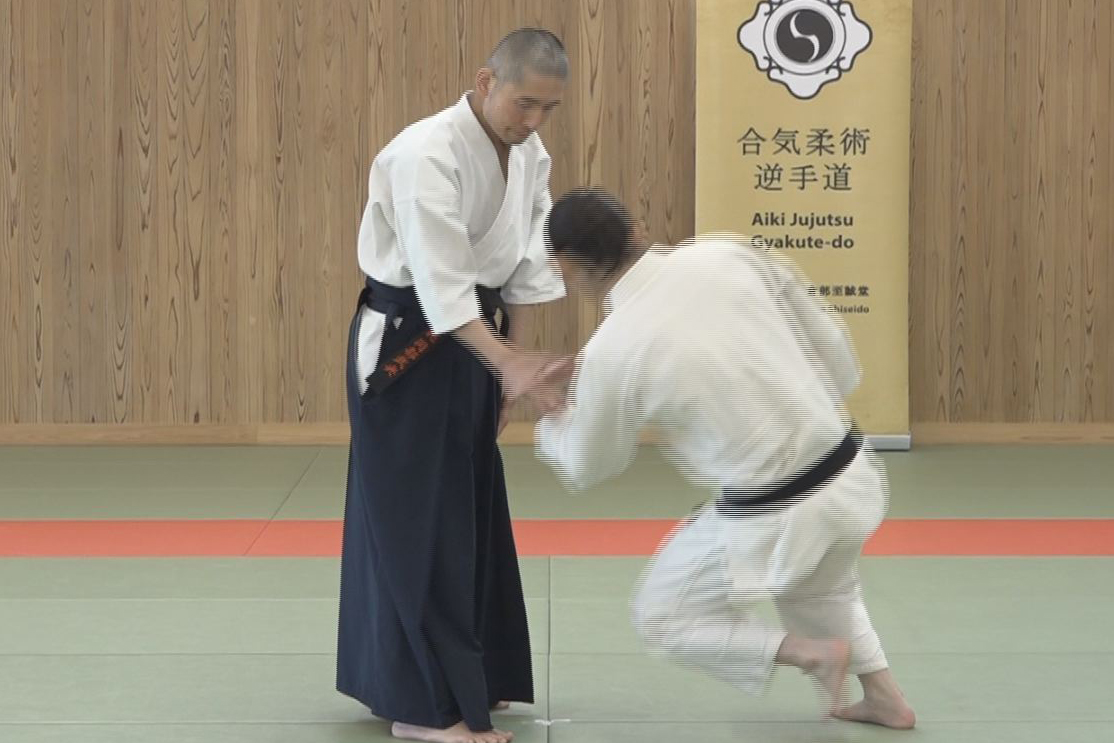
【AIKI Web Course Part 2】Lesson 12 – Gyaku-te by not Using Force nor AIKI
-
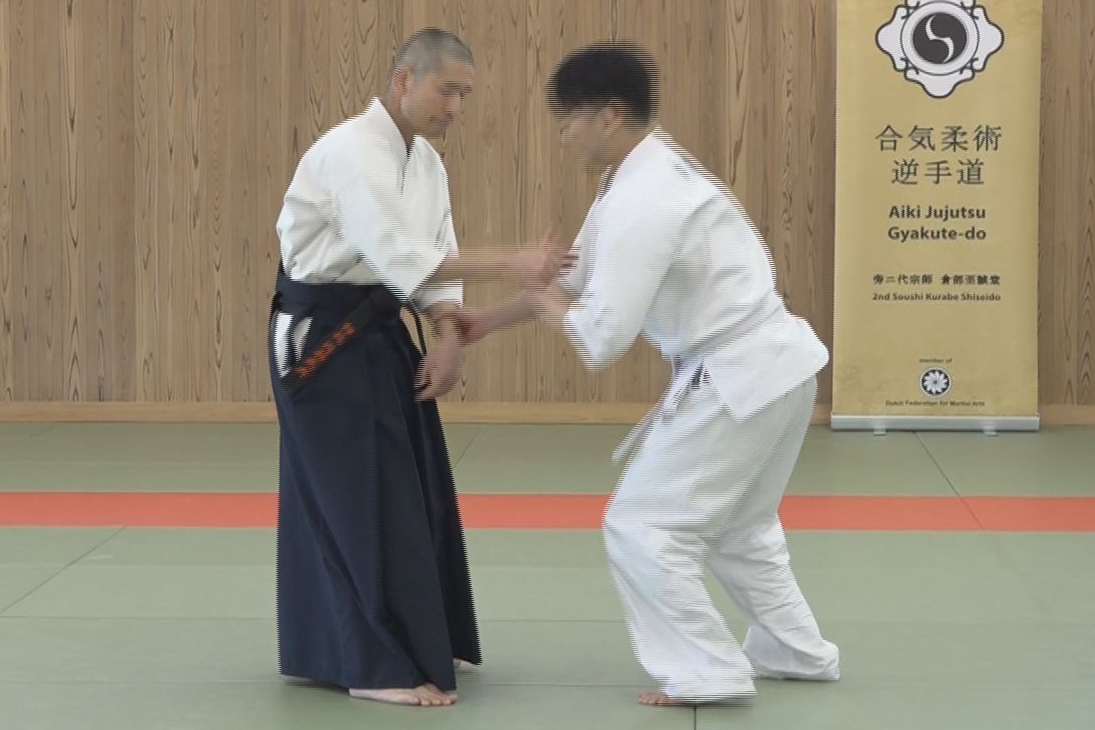
【AIKI Web Course Part 2】Lesson 11 – Gyaku-te Realized by the AIKI Method
-
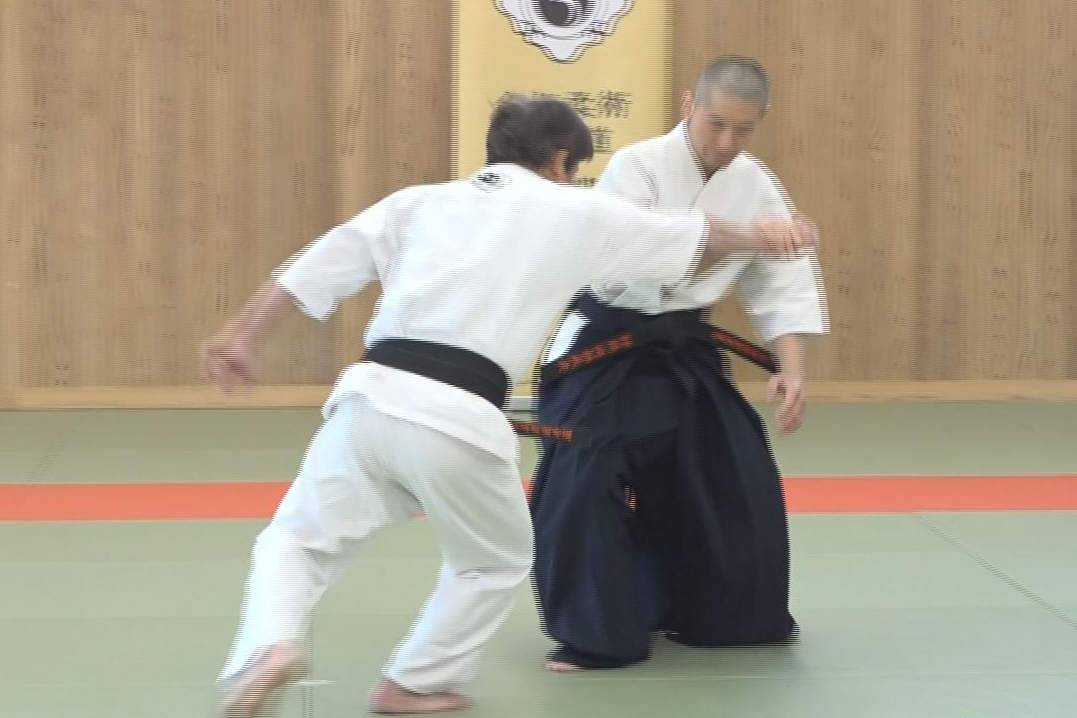
【AIKI Web Course Part 2】Lesson 10 – Application of Force Equilibrium method
-
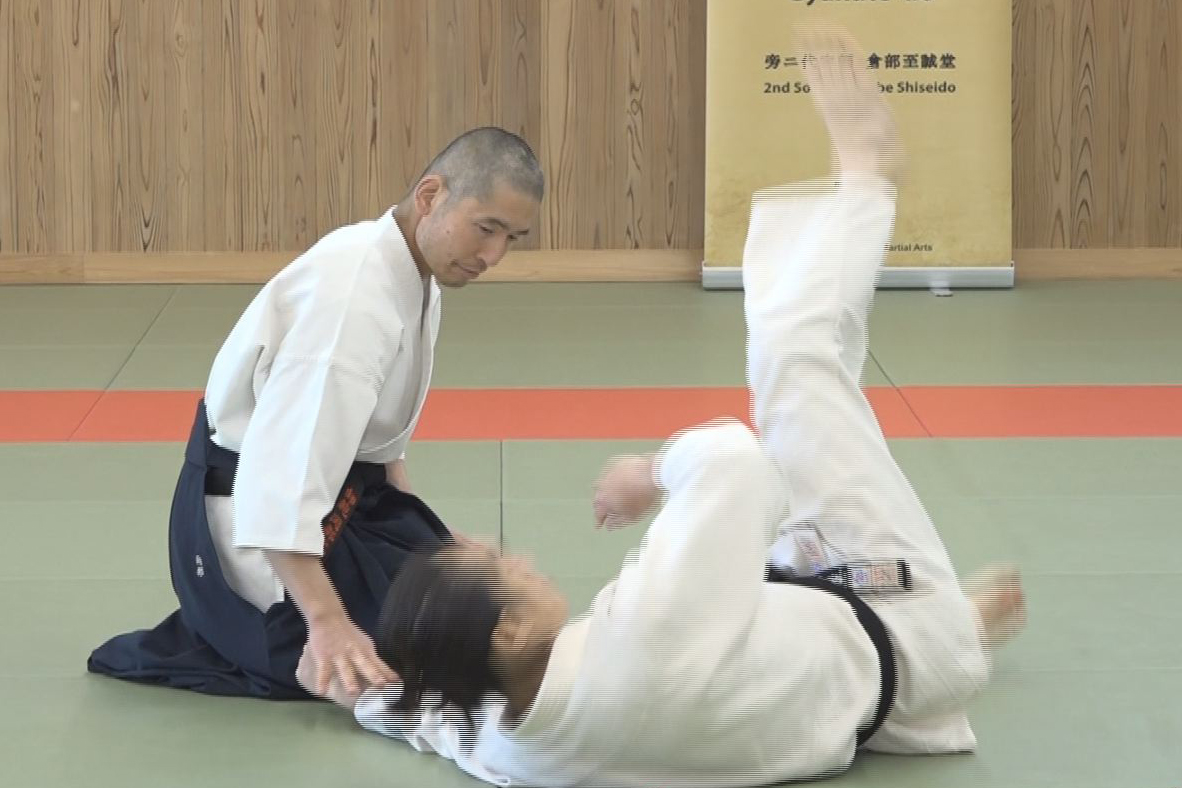
【AIKI Web Course Part 2】Lesson 9 – Force Equilibrium
-
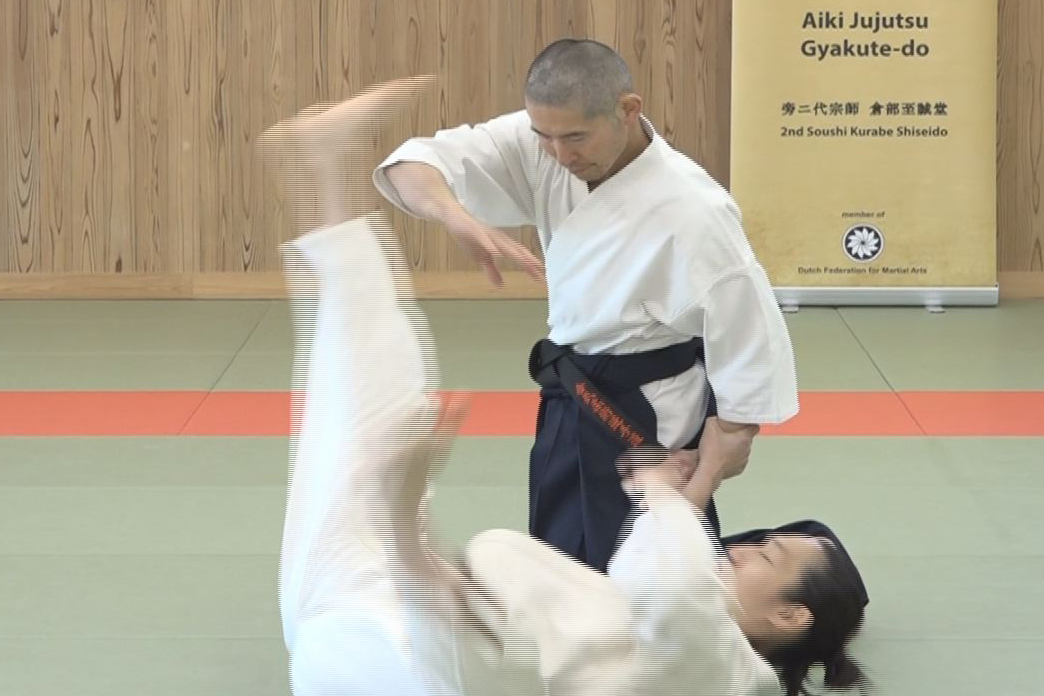
【AIKI Web Course Part 2】Lesson 8 – Application of Targeted Force Transfer
-
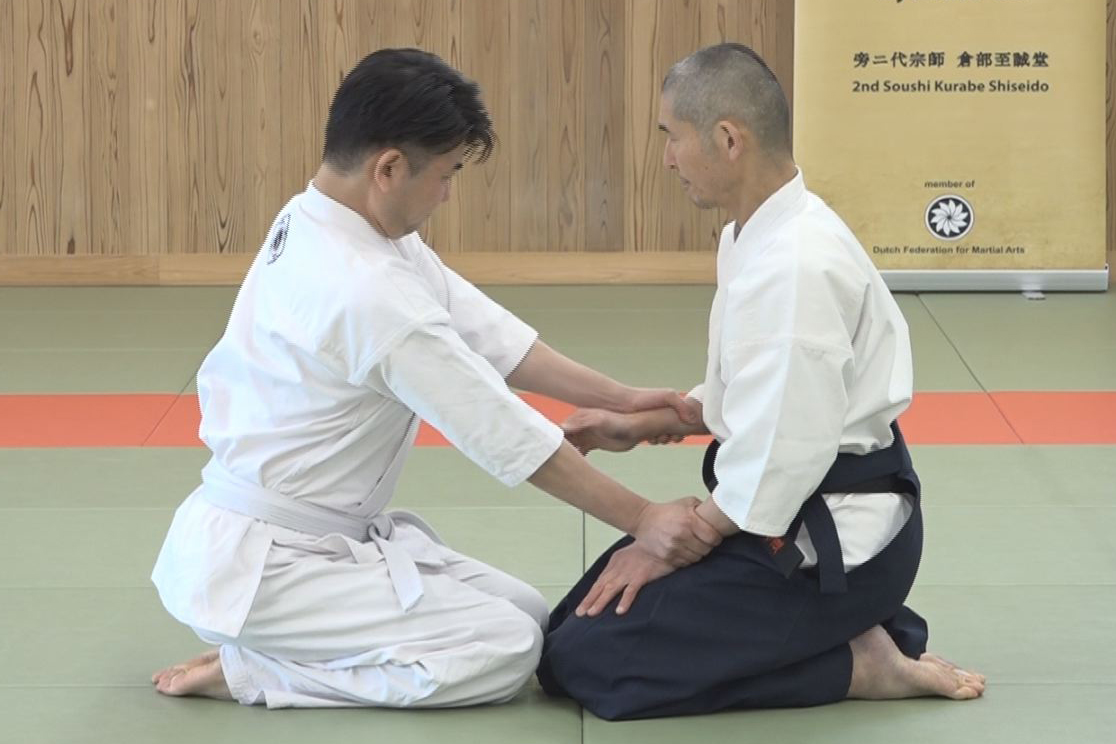
【AIKI Web Course Part 2】Lesson 7 – Targeted Force Transfer
-
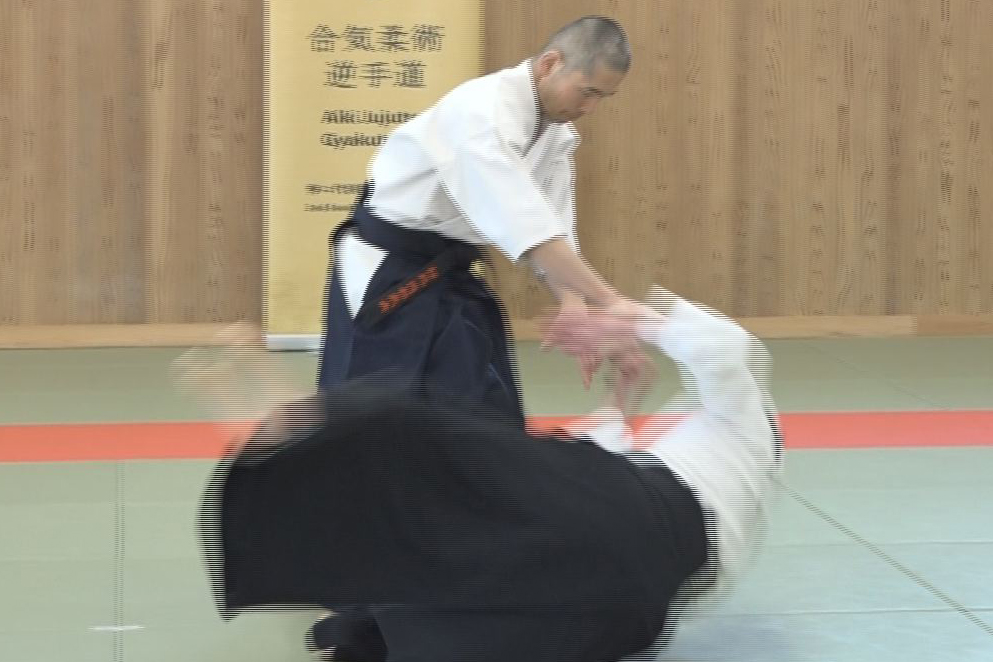
【AIKI Web Course Part 2】Lesson 6 – Application of AIKI Connection
-
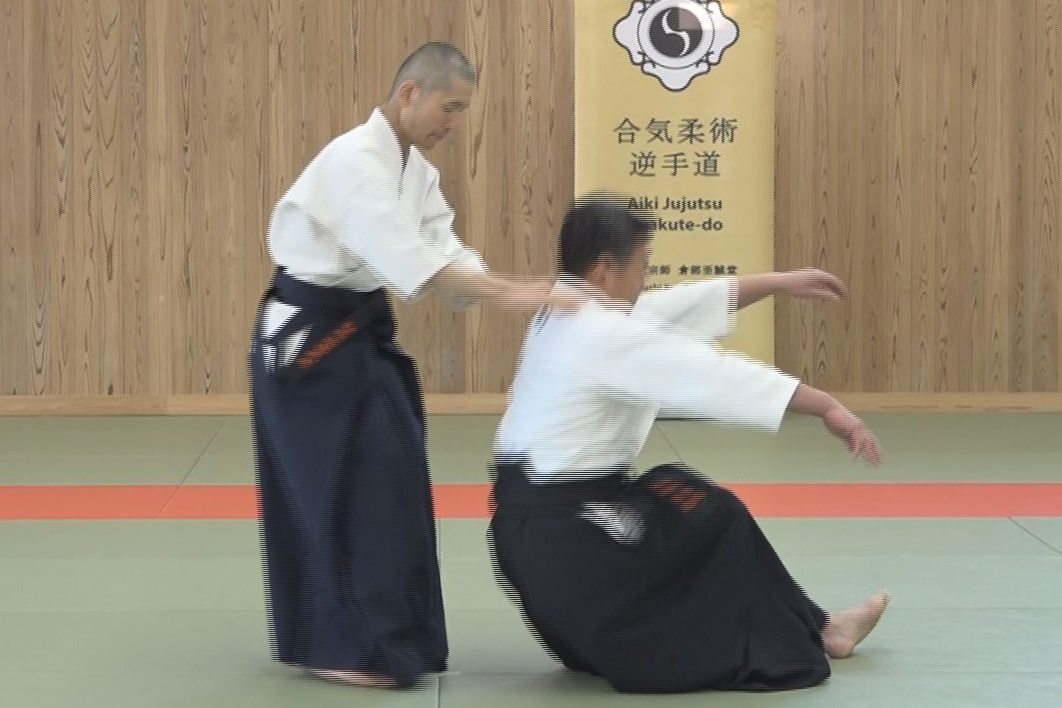
【AIKI Web Course Part 2】Lesson 5 – AIKI Connection
-
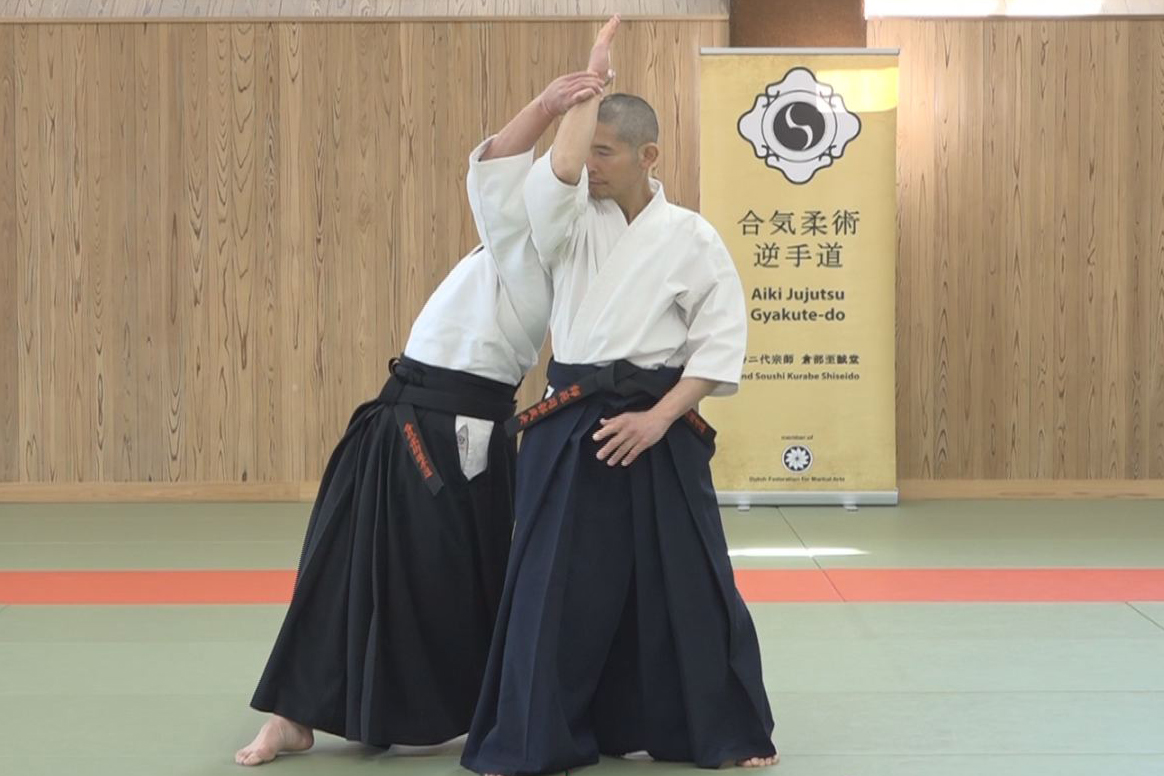
【AIKI Web Course Part 2】Lesson 4 – Application of Nondetectable Force Transfer
-
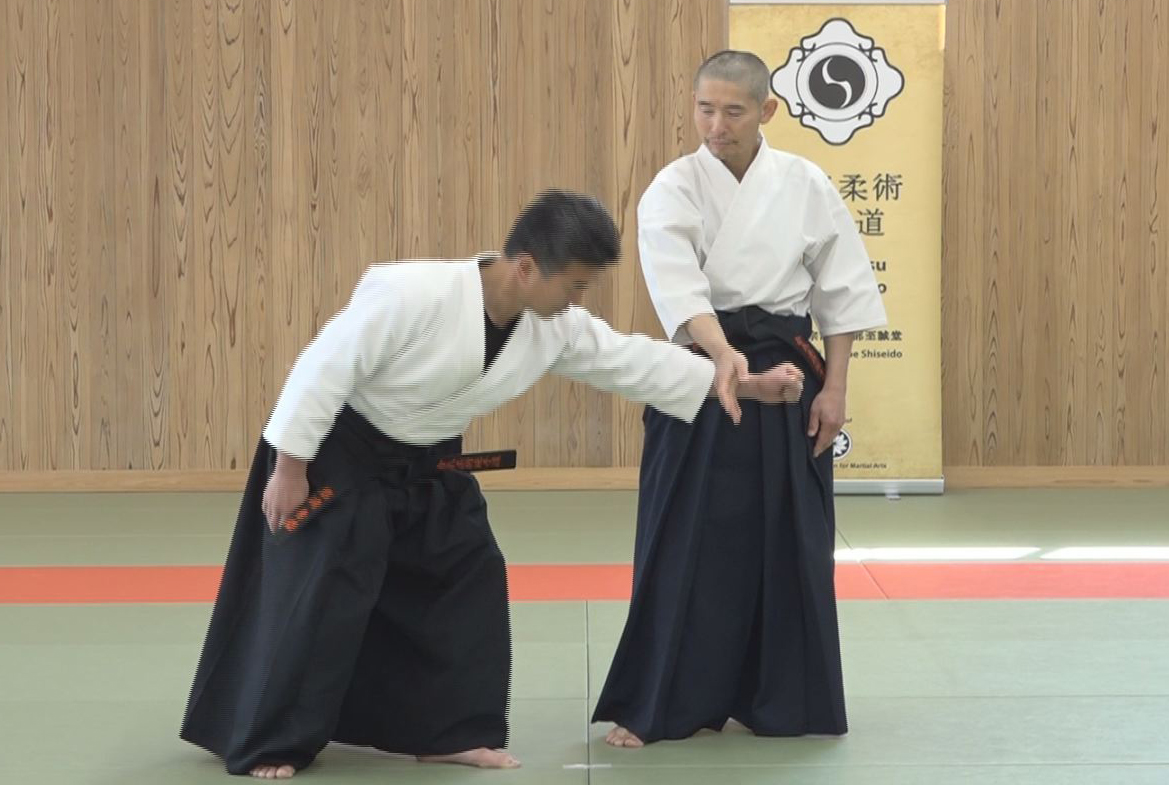
【AIKI Web Course Part 2】Lesson 3 – Explanation of Undetectable Force Transfer
-
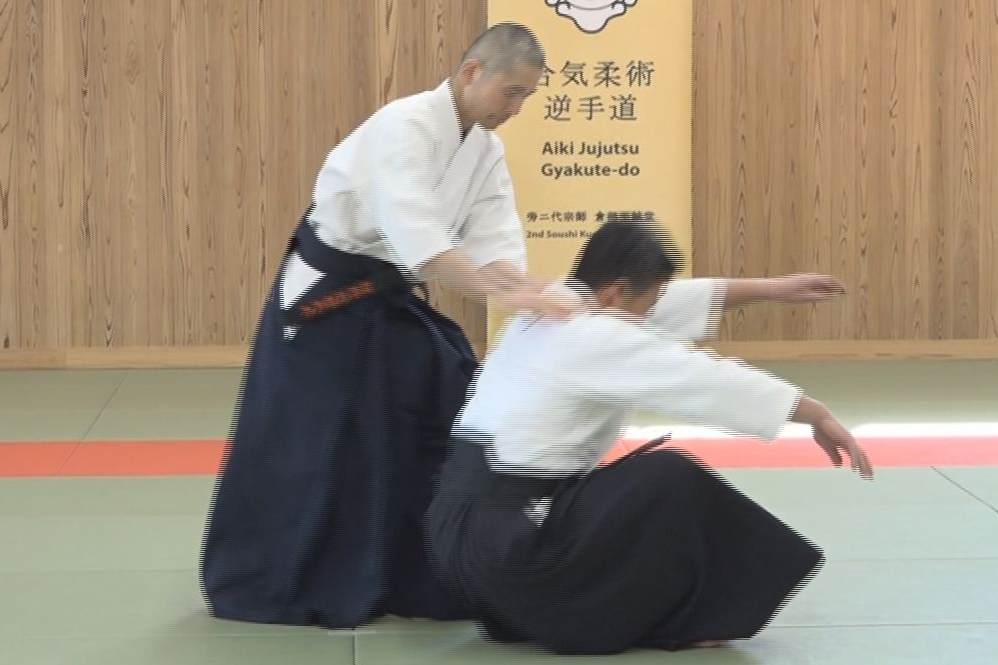
【AIKI Web Course Part 2】Lesson 2 – Application of Waving Method
-
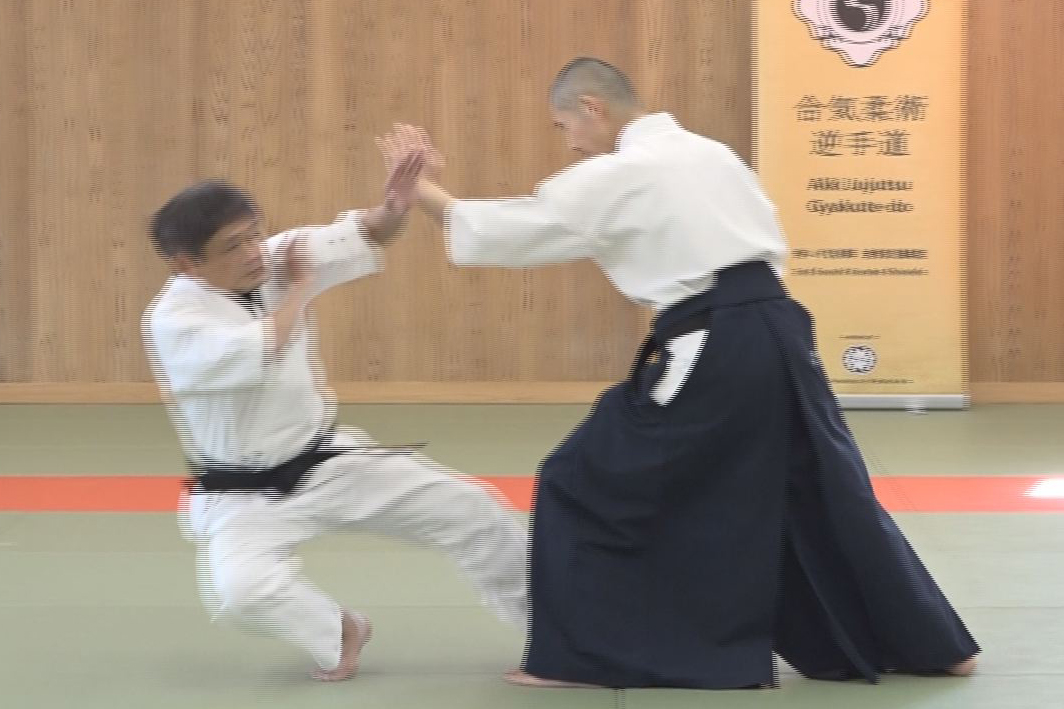
【AIKI Web Course Part 2】Lesson 1 – The Explanation of Waving Method
-
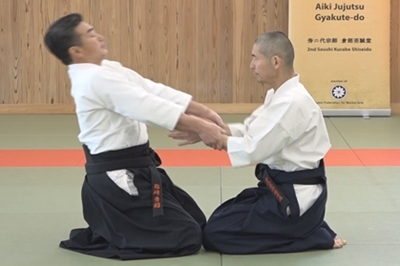
【AIKI Web Course Part 2】Introduction with video









